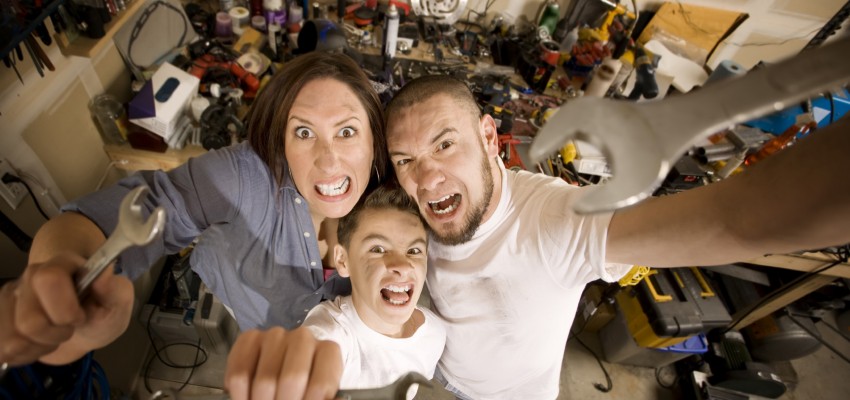Electricity bills have been steadily rising with no respite in the foreseeable future. Increasingly, home owners are turning to efficient building envelopes to create homes that utilize less energy. Investing in making your home more efficient and more comfortable will save you money in the long term and will reduce your impact on the environment.
But energy-efficient retrofits don’t come cheap and you want to know where you are going to get the most energy saving bang for your buck. One way to determine where your energy saving investment will go the furthest is by getting a home energy audit. This will show where your conditioned indoor air is escaping so you can plug the gaps in your building envelope.
While a professional home energy audit will be more accurate, you can do your own and get a general idea of which issues to tackle first. Keep a checklist of issues which you can prioritize according to your budget.
Mind the Gap
Each home has gaps, cracks and holes through which indoor air escapes. You can save as much as 5% to 30% per year by plugging gaps in your building envelope. Sealing these gaps with caulk is one of the cheapest and easiest ways to reduce your energy consumption.
Do a visual inspection both inside and out, taking special note of wall junctions, plumbing openings, lighting openings, electrical outlets and switch plates, around door and window frames, wall-mounted air conditioning units and around vents and fans.
Check the seals around doors and windows for cracks or deterioration. Check along baseboards and where floors and ceilings meet the walls.
Another way to check for gaps is through a blower door test. You can do a building pressurization test without the blower door equipment.
- Conduct your test on a windy, cool day
- Turn off all combustion appliances such as gas-burning water heaters and furnaces
- Close all openings like windows, doors and flues if you have fireplaces
- Suck the air out of your home by turning on all exhaust fans, dryer vents, bathroom fans, stove fans etc.
- Light a stick of incense and walk slowly from room to room, paying particular attention to places where leaks are common like around windows and electrical outlets
- Smoke that is blown in or sucked out will show you where the leaks are
Once leaks have been detected, caulk the openings or replace weather stripping to seal your home.
Inspect your Insulation
These kinds of retrofits cost more, but they do make a huge difference to your monthly energy bill.
Ensure that your attic hatch is insulated, that it seals tightly and that the weather stripping around the attic opening is in good condition.
Check for gaps and holes, especially around vents, electrical boxes, ductwork and chimneys.
Inspect the attic vents to ensure that they are not blocked by insulation. Attic vents enable any moisture that builds up in the attic to escape.
Check that your insulation isn’t flattened or settled as this will reduce its efficacy. Measure the amount of insulation you have in your attic to ensure that it meets current building standards. If you have an older home, improving your insulation can really help to seal the deal.
You can check the thickness of insulation in your wall by switching off the circuit breaker to an exterior wall outlet. Be absolutely sure that the power is off. Remove the cover plate and gently press a crochet hook into the wall. This will tell you how much insulation is in the wall and some insulation will come out when you remove the hook so you can see what kind of insulation it is.
Unfortunately, this test doesn’t tell you if your wall insulation has settled, only a thermographic inspection can show where insulation is in a wall. Guys at www.anywall.co.uk are my go to for any wall insulation related help.
Is your basement or crawlspace conditioned? If not, it should have a minimum of R-25 insulation. This is especially important if you have heating or cooling appliances, ducting or plumbing running through this space.
Check that your water heater, hot water pipes, and ducts are all insulated.
All Systems Go
Inspection of your heating and cooling systems should take place on an annual basis. If your heating or cooling systems have filters, these should be cleaned and checked regularly according to your manufacturer’s instructions. Some filters need to be cleaned every month. Doing so will vastly improve the efficiency of those systems.
Have a professional service your furnace annually or do it yourself. Get a guide here.
If your furnace or air conditioner is more than 15 years old, consider replacing it with an Energy Star appliance. Check you ducting for gaps, holes or other corrosion and fix these with mastic.
Appliance Compliance
‘Vampire’ loads account for 10-15% of your home’s energy consumption. Get a power bar with a timer so your appliances aren’t on when you are at work or sleeping. If your appliances are old, consider investing in Energy Star appliances which will reduce your monthly energy bill.
Camping? Make friends and influence people around the campfire with meals that are the cat’s pj’s. Get your copy of the Flaming Marshmallow’s Guide to Campfire Cooking.





That incense trick is some sort of genius! I live in the UK and the my house is pretty damn old, so it’s just draft central.
Pingback: Renovations that Add the Most Resale Value to your Home – Hank
Pingback: Renovations that Add the Most Resale Value to your Home – BLANTON
Pingback: RENOVATIONS THAT ADD THE MOST RESALE VALUE TO YOUR HOME – My Blog